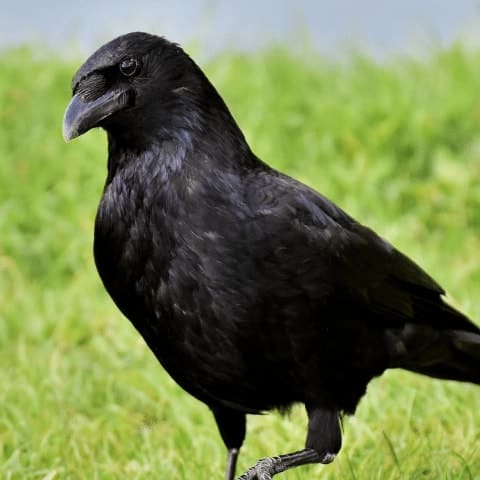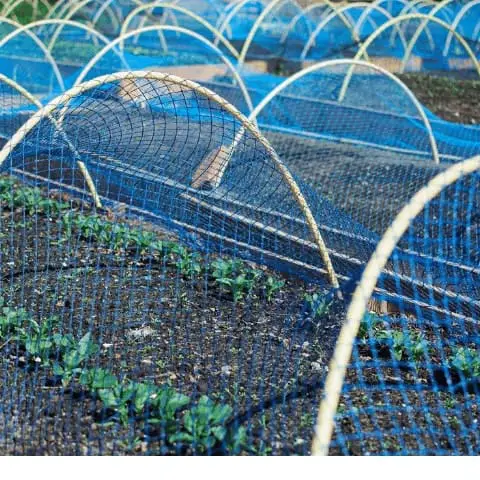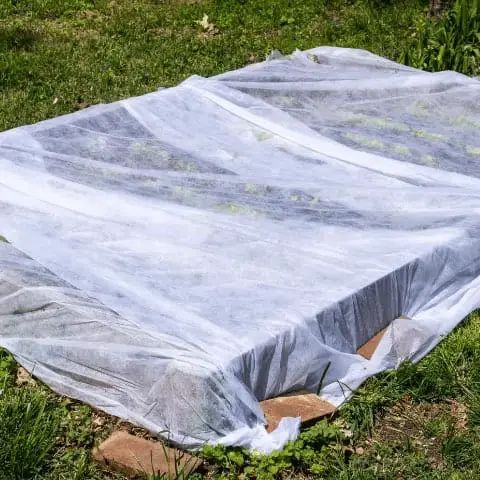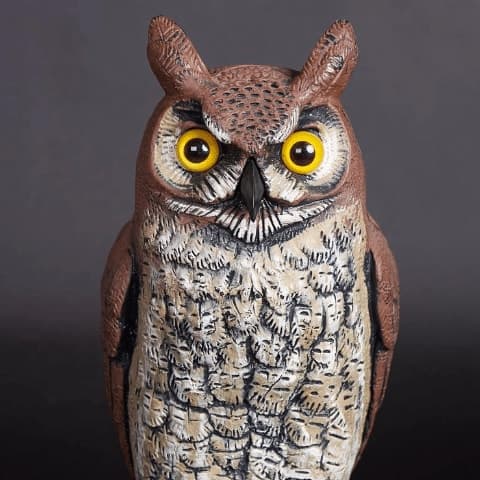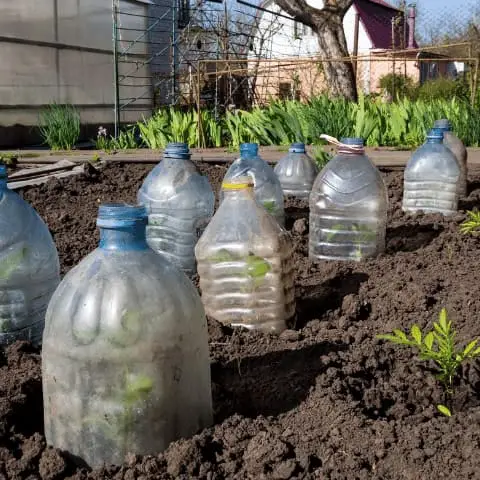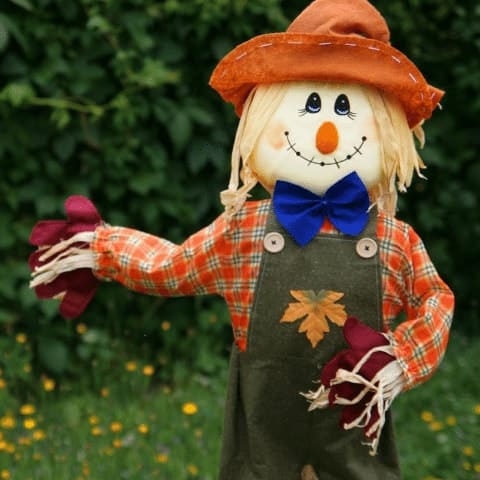Generally speaking, birds are usually considered beneficial for the garden. It is common knowledge that they are powerful allies in the fight against harmful insects and they can brighten our days with their charming melodies.
However, if we own a vegetable garden… well, then it’s a whole different story! These animals could quickly change from feathered friends to ardent enemies.
Those who love to grow their own produce, realize very quickly that if they want to see the fruit of their sweat and labor, they must quickly find a solution to the bird problem. Just to give an example, birds are fond of seeds, tender seedlings, lettuce, fruits, or those juicy tomatoes that you were just about to harvest.
Among the most harmful birds for our garden, are pigeons, crows, geese, sparrows, swallows, gulls, and woodpeckers.
As a side note, if you want to know how to get rid of pigeons, I wrote a whole article on the subject.
I have seen people try to implement solutions to get rid of birds that sometimes are completely impractical, expensive, or useless.
I have made some research among gardeners to find some consensus on the subject. I came up with a list of solutions on how to get rid of birds naturally.
Because we don’t want to hurt them, we just don’t want them in our garden!
How to protect your vegetable garden from birds
Here is a list with different solutions:
- Bird netting. By far THE MOST effective way to protect your vegetable garden. You can protect an entire row of seedlings by making a tunnel and covering it with bird netting or chicken wire. I personally prefer butterfly netting, so that I can kill two birds with one stone (pun intended!). Butterfly netting will stop harmful moths from penetrating the net, as well as unwanted birds, however, other beneficial insects, such as honeybees will still able to get through the net. They are quite popular and you find them on sale on Amazon here.
These arches or fences are relatively simple to build. They can be made from aluminum hoops, recycled materials, bamboo, and soft hoses, etc.
You only need to make sure you secure the frame deep into the ground so that they will be sturdy and can withstand strong wind. Once the frame is secure, you stretch the bird net or chicken wire on top of it for the entire length of the tunnel, pull tightly, and secure it to the ground with garden stakes and some rocks. Although it is a job that you can do on your own, having someone to help you untangle the net is certainly helpful.
A word of caution: if you don’t secure and pull the net tightly, you might wake up one morning to find some (dead) bird tangled in it.
A cheap net will deteriorate in just one season because of the sun and weather conditions. You probably don’t want to buy it every year, that’s why you should invest in a “good net”, something that is made of good quality and is UV resistant.
2. Use garden fleece to protect your seedlings. This cover can be used to protect young crops from frost but can be used also as a bird deterrent at least till the seedlings grow above 8 inches.
3. A decoy predator bird. This could be a crow or an owl. It will be effective only for a (very) short amount of time. Perhaps birds are not the smartest of animals, but they are not stupid either! They will get used to that motionless black crow staring at them and sure enough, you will see them flying around just beside it in no time! This trick does not stand the test of time, be aware of it. The only way it can work is if you move the decoy bird every week.
Nowadays, there are decoy birds that move and make sounds. These are definitely doing the job and are preferable to those that don’t move. When installing them on a pole, make sure you secure them well, so that the wind won’t blow them away. Again, as with the motionless decoy bird, make sure you move them every once in a while.
4. Use soda bottles. You can “dress” your seedlings with plastic bottles. Cut the bottom of a soda bottle and take off the cap. Place the bottle on the seedling. This will prevent the birds from approaching the plants while allowing them to breathe and to grow until they reach a size where birds won’t bother them anymore. This method is good for a small garden as it is a bit time-consuming.
5. Keep a bird feeder stocked somewhere in your garden, far away from where you are growing vegetables. There are no guarantees about this method, as I have heard that birds will eat from both (and bring their friends along).
6. Scare the birds with shiny objects. Some gardeners hang CDs and shiny Christmas decorations on their fence. These objects move with the wind creating dazzling lights. The flashing light and the sudden motion is known to scare birds. There are a few disadvantages to this method: first of all, if they are not secured to the fence, some of these shiny items can be blown away by the wind polluting the environment. You cannot implement this method on a large scale since it could be time-consuming, not to mention that it gives a messy appearance to your garden. In addition to the above, just like for the decoy predator, birds will get used to these shiny objects once they realize they are harmless and will feast on your vegetables.
7. Windchimes. The same principles of the shiny objects can be applied for windchimes. You cannot apply this method on a large scale.
8. Make a scarecrow. Just like with the decoy predator bird, in order to be effective, the secret of success is to move around the scarecrow at least every week if not more.
9. Place a toy snake on your garden bed. Move it from time to time just as you would do for the decoy predator bird. Be aware that it will scare you (and your guests) more often than it does the birds! I can speak from personal experience…
10. Surround the seedlings with sticks. Insert thin and sharp sticks into the ground in the proximity of the seedlings. This makes it difficult for birds to land on your crops and to reach them. This method is extremely time-consuming and will also prevent you from comfortably reaching your seedlings.
11. Get some audio bird deterrent. There is a wide range of products that reproduce sounds of distressed birds or predators (like the screech of an owl, just to name one) that can scare birds. These stand-alone devices have a microchip and often come with speakers. This and a combination of other bird deterrents can be very effective.
12. Scare Eye Balloons. These are large yellow balloons with big eyes that resemble those of an owl. You can hang them in your property and garden and they will swing with the wind. You can find them on sale on Amazon:
The key to success here is quantity. Use at least one bird scare eye balloon every 400 square feet of area. The goal is to give the birds the impression they are surrounded by predators. A nice thing about these balloons is that they float, meaning that they will prevent ducks and geese from landing and swimming in your pool (if you have one).
13. Bird cannons. Available on the market you can also find propane portable bird cannons that emit automatic thunderclaps to deter birds. It is advisable to move the cannon often, as the birds can get used also to the noise.
To conclude, keeping birds away from our garden is not an easy task. You have to keep in mind that no single product stands alone. It is advisable to use a combination of bird deterrents for best results.
Some of the links above are affiliate links, meaning, at no additional cost to you, I will earn a commission if you click through and make a purchase.

